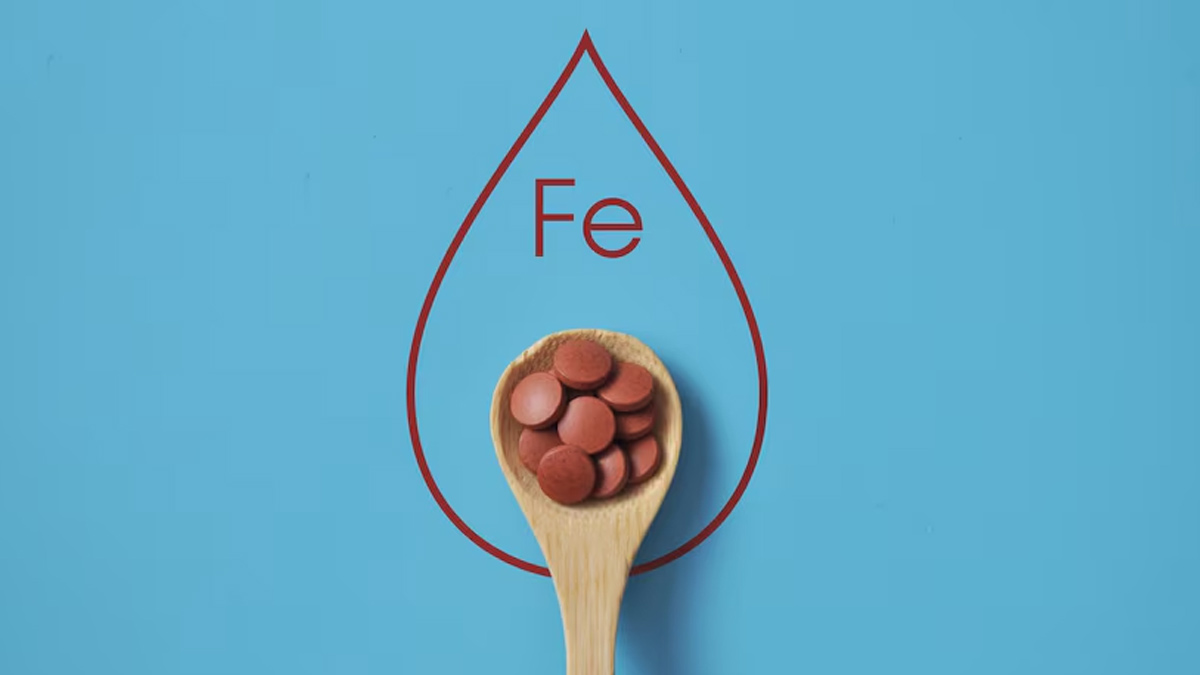
Iron is a critical nutrient for children’s growth and development, yet iron deficiency remains a global concern, affecting millions of young children, sometimes even without causing anaemia. This condition, known as iron deficiency without anaemia, is a health issue that can quietly impact a child's physical and cognitive development.
Table of Content:-
To understand the stages of iron deficiency, its symptoms, and the importance of maintaining a healthy iron status, OnlyMyHealth team interacted with Dr SA Miraj, Paediatrician, Manvi Hospital, Hubli, Karnataka.
Why Iron is Vital for Growing Children
Iron plays a central role in various developmental processes that are essential during early childhood. Dr Miraj emphasises the importance of iron in children’s growth:
"Deficiency of iron can hinder your child's ability to function effectively. Low iron stores in early years of life is a common concern, impacting their growth and development in significant ways."
During growth, children need iron to fuel processes such as:
Physical Growth: Iron is crucial for muscle and bone development.
Immunity: Iron supports a healthy immune system, helping children fight off infections.
Blood Function: Iron enables the formation of haemoglobin, the protein in red blood cells that carries oxygen throughout the body.
Brain Development: Sufficient iron levels are critical for cognitive development and overall brain health.
The Stages of Iron Deficiency

According to Dr Miraj, iron deficiency in children doesn’t happen overnight. It progresses through three stages: iron depletion, iron deficiency without anaemia, and iron deficiency anaemia (IDA).
Iron depletion: In this stage, the body’s iron stores begin to fall due to inadequate dietary iron. This stage is marked by low serum ferritin, a protein that stores iron, indicating the body is using up its iron reserves.
Iron deficiency without anaemia: At this stage, iron levels are insufficient to meet the body’s needs, though haemoglobin levels may still be normal. Iron deficiency without anaemia often goes unnoticed, yet it impacts a child’s energy, mood, and ability to concentrate. Dr Miraj explains, “Changes in the iron status before development of anaemia is also called iron deficiency without anaemia, which leads to low levels of mean corpuscular volume (MCV) and decreased serum ferritin.”
Iron deficiency anaemia (IDA): “In the final and most severe stage, iron stores are so low that haemoglobin production is impaired, resulting in anaemia,” Dr Miraj said. IDA is characterised by low levels of haemoglobin, MCV (mean corpuscular volume), and MCH (mean corpuscular haemoglobin), impacting oxygen transport and leading to fatigue, weakness, and other symptoms.
Recognising these stages is important because each requires a different treatment approach. Early intervention can help prevent the progression to anaemia.
Iron deficiency is alarmingly common, particularly in children under five years old. Studies indicate that approximately 42% of children globally are anaemic, and iron deficiency accounts for at least 50% of all anaemia cases. This gap in iron levels is largely due to increased physiological demands during rapid growth, coupled with inadequate iron intake.
Also read: 10 Signs Of Iron Deficiency
Symptoms of Iron Deficiency in Children
While iron deficiency without anaemia may not exhibit all the symptoms of anaemia, it can still cause:

Weakness and fatigue: Children may have low energy and tire easily.
Pale skin: Lack of iron can cause paleness or pallor.
Behavioural changes: Iron deficiency can impact mood, leading to irritability, difficulty concentrating, or low cognitive performance.
Delayed growth: Growth may slow down if iron levels are not adequate.
Frequent infections: A compromised immune system due to low iron increases susceptibility to infections.
How Much Iron Do Children Need?
Dr Miraj explained, “Children are born with iron stores, but they require additional iron from their diet to keep up with their growth. In fact, the recommended dietary allowance (RDA) for iron during early infancy is nearly equivalent to the RDA for adults.” This high requirement underscores the need to ensure children are getting enough iron-rich foods or supplements as they grow.

Also read: Iron Deficiency Anaemia in Children: Symptoms, Causes, and Treatment
Factors Increasing the Risk of Iron Deficiency in Children
Certain factors make some children more vulnerable to iron deficiency:
- Premature birth or low birth weight
- Chronic infections or dietary restrictions
- Lack of iron-rich foods
- Non-fortified formulas
- Lead exposure
- Overweight or obesity
The Long-Term Effects of Iron Deficiency on Brain Development
One of the most concerning impacts of iron deficiency is on cognitive and neurological development. Dr Miraj points out that "Growing kids are prone to iron deficiencies, which may affect brain function. Studies have shown that iron supplementation during infancy and childhood is beneficial for brain development in babies." Proper iron intake is essential not only to prevent anaemia but also to nurture a child's neurocognitive health and ensure that they reach developmental milestones.
Also watch this video
How we keep this article up to date:
We work with experts and keep a close eye on the latest in health and wellness. Whenever there is a new research or helpful information, we update our articles with accurate and useful advice.
Current Version